Guns are a huge investment — both financially and physically.
That’s why a lot of us dedicate money and time to firearms training. Equally important, however, is investing in a proper gun storage system to keep our guns safe and ready when needed. In this article, I’m going to cover everything you need to know about firearm storage. Let’s dive right in!
What is a Firearm Storage
According to the Bureau of Alcohol, Tobacco, Firearms and Explosives (BATFE) site:
“…A safe, gun safe, gun case, lock box, or other device that is designed to be or can be used to store a firearm and that is designed to be unlocked only by means of a key, a combination, or other similar means.”
In layman’s terms:
It’s a device intended to keep your firearm safe.
Why Should You Use One
To prevent unauthorized users from accessing it. Plain and simple.
It’s mind-blowing that over 380,000 guns are stolen from gun owners each year. Not to mention, over 4.6 million American children live in a household where at least one gun is loaded and unlocked.
I could point to countless tragedies showcasing what happens when a gun owner neglects proper firearm storage. But I think you’ve got the point by now: Proper firearm storage is vital — especially if you’ve got children at home. That said, here are…
Common Gun Storage Options
There are numerous ways on storing your firearm. For example, there are trigger locks, gun cases, gun safes, concealment safes, lock boxes and more. The question is:
Which safe gun-storage system is best for you? It depends on your budget, type of firearm you own, local gun safety laws, and accessibility of the firearm. For example, competitive shooters may desire portability for travelling. A collector would probably want a gun storage that is capable of holding lots of guns. Gun users that use gun accessories like an AR-10 scope would want extra slots. Home defenders worry about speed of access.
You get the idea — the right gun storage system is different for everyone. That said, let’s break down the most common gun storage options, starting with…
Trigger Locks
As the name suggests, trigger locks are locks placed on the trigger to prevent it from firing. It works by blocking the barrel or trigger and ammunition from being loaded.
The good news? A gun lock is the most affordable gun storage option on this list (costing less than $20). However, the question remains: How safe are gun locks? In my opinion, I believe trigger locks are one of the least secure methods to securing a firearm. Here’s why:
They can be easily unlocked with paper clips and a screwdriver. In addition, it offers zero protection against theft. Now, I’m not anti-gun locks. In fact, trigger locks are cheap, portable, add very little weight to the gun, and are super easy to use. However, they shouldn’t be used as the only security measure to securing a firearm. Instead, trigger locks should serve as an extra layer of security to the storage options mentioned below.
 Gun Cases
Gun Cases
People like John Wick use gun cases (pun intended). They’re designed to protect one (or more) firearms from physical damage and provide portability. These cases are affordable and easy to store. If you’re in the market looking to buy a gun case, you’ll notice there are two categories gun cases fall into:
- Hard Cases
- Soft Cases
The difference? Hard cases are more secure than soft cases. That also means they’re bulkier, heavier and more expensive. On the other hand, soft cases are lighter and quieter. So which one should you choose?
If you’re looking for heavy-duty protection, opt-in for a hard case. However, if you want a lighter case and intend on bringing it with you in the woods, then go for a soft case. Whatever case you choose, keep in mind that gun cases are designed to transport firearms (or used as short-term storages). You shouldn’t store firearms in gun cases long-term because moisture can enter, causing rust. If you’re looking for a long-term storage unit, then get a…
Gun Safe
Gun safes are the most secure gun storage option on this list. It’s designed to be burglar-proof. If a thief breaks into your house and encounters a gun safe, they’ll probably leave it alone. Think about it:
The complex locking mechanism (like biometrics and radio frequency identification), the heavy-gauge steel, weight, and the possibility of the safe bolted directly into concrete flags one message: You won’t have an easy time getting through me.
That’s why you should invest in a gun safe — to safely secure your firearm (especially if you have more than one). Gun safes do cost a pretty penny — ranging from $300 to over $4,000. But the investment will pay itself off ten folds. If you’re looking into buying a safe, here are a few price-changing details to keep an eye out for:
Locking Mechanism: In my opinion, the quality of the lock is just as important as the safe’s thickness. That said, there are a couple of locking mechanisms you can get while choosing your gun safe, like: Electronic, mechanical, redundant, and biometric locks. Which one should you choose? It’s completely up to you. Electronic locks are easier to access than spin dial locks, however, they can be more expensive.
Firing Rating: Anything could happen — including a fire erupting in your home or at your business. That’s why you should invest in a gun safe that is fire-proof. The problem? Not all safes are fire-proof. And not all of them have the same amount of firing rating.
The question is: How much firing rating should you get? On average, it’ll take 1 hour for an American house to burn to the ground (without firefighters intervening). That said, it’d be best if you bought a safe that can survive an hour or more at 1,300 degrees. If you’re on a budget, then select a gun safe that has the longest firing rating that you can afford.
Steel Thickness: If you want a secure safe that deters robbers with hammers or screwdrivers, then make sure to get a safe that is heavily constructed. Meaning, avoid thin metal frames that are constructed from 14 to 20 gauges. Instead, aim for a steel gauge of at least 10 (preferably 8 or 6). Also, do know that steel is gauged using the reverse scale. This means a 9 gauge steel is thicker than 12, 14, or 15 gauge.
How to Properly Store Your Firearm
You’ve just bought a gun storage system and installed it in your home. What’s next? Learning how to properly store your firearm(s) in the safe. Here’s how you do it, starting with…
 Remove Gun Safe Moisture
Remove Gun Safe Moisture
A firearm’s worst enemy is rust. Rust will literally destroy bluing and corrode your gun over time. So…what causes rust and how can I fix it?
Moisture causes rust, hence why you should remove gun safe moisture. That said, here’s an effective way to removing moisture from a safe:
Invest in a dehumidifier. It’s an electric gadget that automatically removes moisture from the air. It works like a vacuum — it sucks in the air, removes the moisture (placing it into a collection tank), and blows the air back out. Pretty cool, right? Just remember to set a calendar reminder every month or so (depending on the product you purchase) to check the battery life and water tank.
Use Gun Oil
Gun oil is the good stuff.
It has some pretty neat properties that’ll increase the longevity of your firearm like:
- Reducing adhesion of abrasives (like grit and sand)
- Prevents formation of rust while protecting metal surfaces from moisture
- Could uphold in extreme environments
Personally, I like using all-in-one CLP (clean, lubricate, protect) type cleaner. However, if you aren’t a fan of CLPS, then stick to the good ol’ Rem Oil. Whatever option you choose, make sure to avoid using WD-40. It oxidizes quite quickly and starts to turn yellow. Not good.
Avoid Skin-to-Metal Contact
Your gun has a sensitive spot:
The barrel. (Or anything that is metal). It doesn’t like being touched there before hibernating in the gun storage. Why? Because your hand is oily. And your body oils are very harmful to metal.
In fact, it’ll cause rusty fingerprint spots on the gun’s metal if stored for a period of time. The good news? The solution is super easy. Just wear a pair of gloves (lightly coated with oil) when moving your firearm into the gun storage.
Check-in
Two months has passed and the reminder you set to check your dehumidifier has been alerted. What’s next?
First, take out your dehumidifier and check the battery life along with the water storage to see if it needs maintenance. Then, pull out each gun from the safe and inspect them. The purpose is to double check your cleaning regimen to make sure you didn’t miss anything. Have extra time? Check your firearm’s accessories like night vision optics or red dot sight for additional cleaning. If everything pins out, then put back your guns into the safe (remember to wear gloves) and set the next calendar reminder.
Firearm Storage Tips
Here are a few extra tips to ensure your firearms are safely stored:
- Don’t leave your firearm out in the open or in places where they can be accessed by unauthorized individuals (like children).
- Instead, use a dedicated gun storage (like a gun safe, locking steel cabinet, gun case, etc.) that is secured with a lock.
- Ensure gun is unloaded prior to storing it in the storage.
- Keep firearm ammunition in a separate location and away from flammables.
- Store ammunition in a dry environment to prevent corrosion.
- If you have optics, make sure they’re covered to prevent dust falling on the lenses. That way, your riflescope stays clean.
- As an extra safety precaution, use a trigger lock or cable lock when firearms are stored.
- Store guns horizontally (or with muzzle pointing downward).
- Gun storage area should be dry, clean and cool.
Conclusion
I’m a huge advocate of safe gun storage practice.
Just like how most gun owners buy a gun for protection, all gun owners should buy a quality safe to prevent (or at least lesson the possibility of) gun theft and keeping it away from unauthorized individuals. Whatever your storage requirements or budget may be, I’m sure you’ll find a secure gun storage method that’ll fit your need.


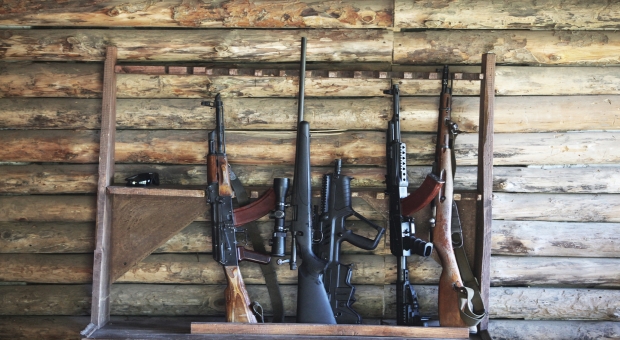

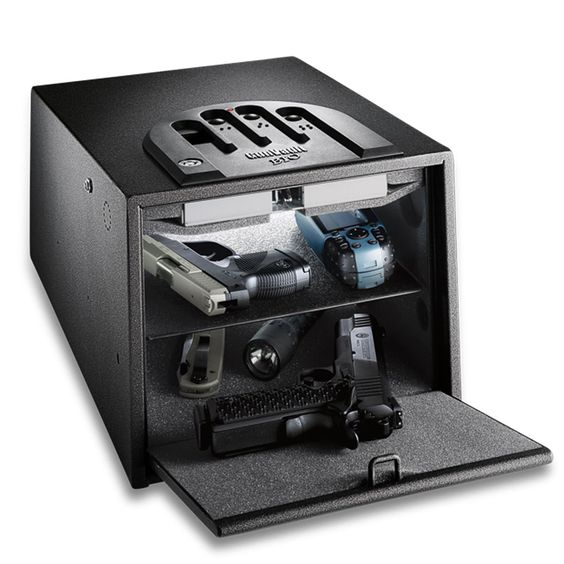
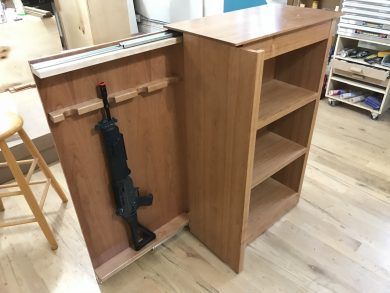

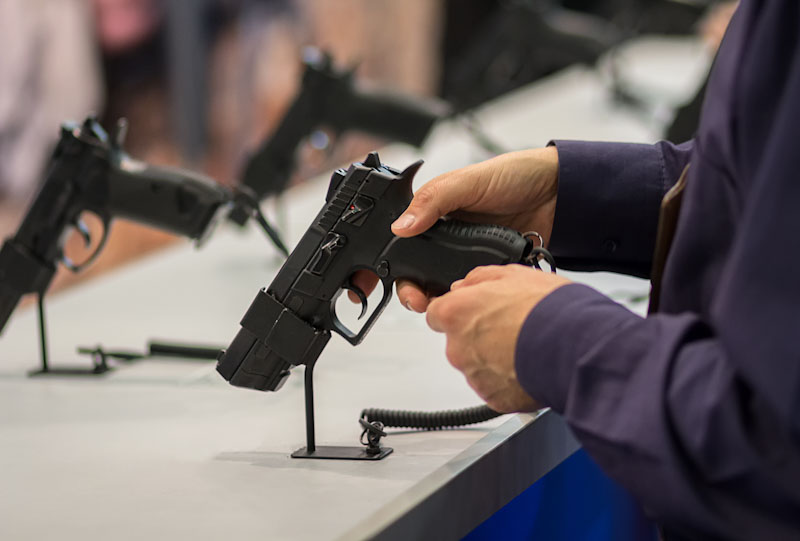
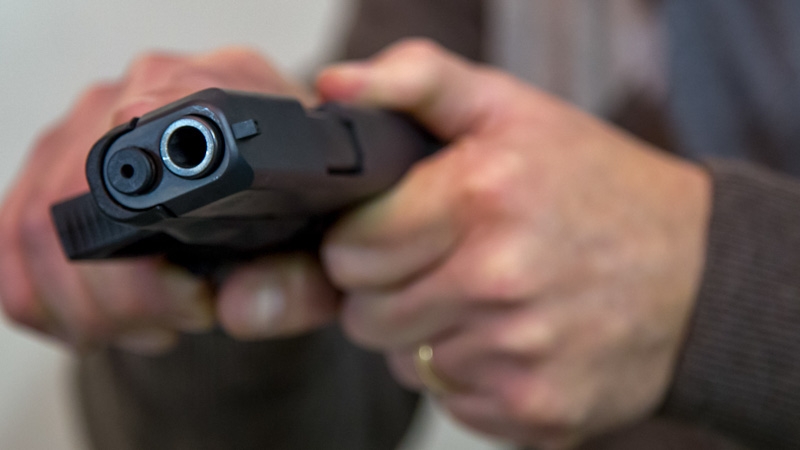
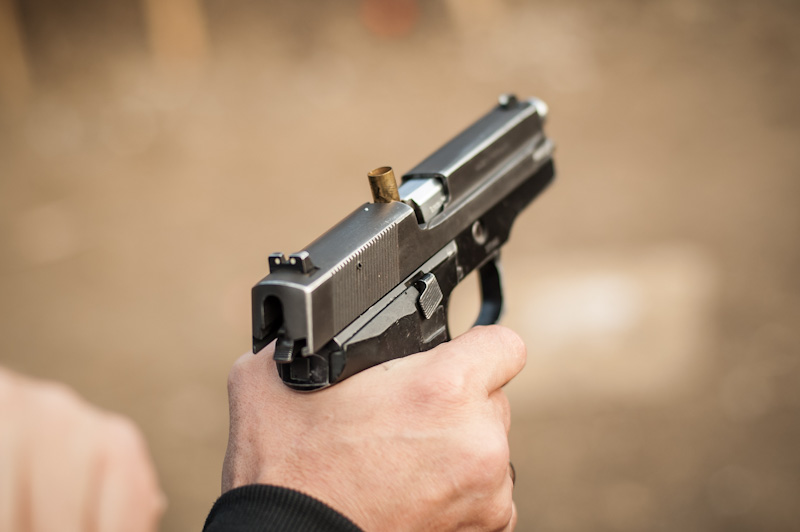
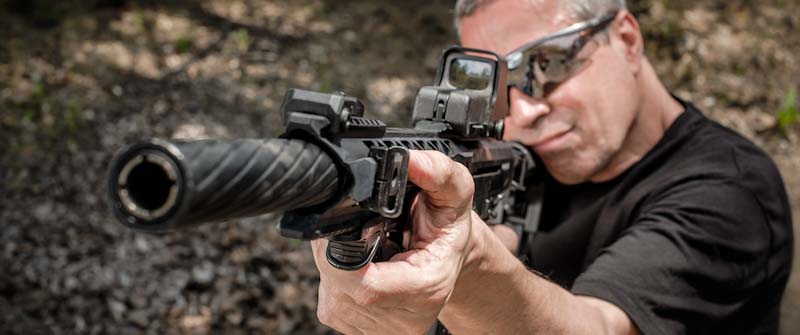


Scrap!ron | October 14, 2019
|
My home is a locked container.
Snake | January 4, 2020
|
^^^ this guy GETS it!! Bravo!
Paul Werner | October 14, 2019
|
No mention of a Goldenrod dehumidifier? Huge oversight…
frosty | January 4, 2020
|
keep all your guns locked & locked up that way when someone, thief or GOV break into your house you CAN’T possibly have enough time to get one !!! SOMEONE has been listening to the socialist in THE DEMOCRATIC REPUBLIC of WASHINGTON, and live inSeattle. if you are any kind of parent you should be able to train your kids to leave them alone, at least until they are old enough to use it then they can learn GUN SAFTY. All my kid & grand kid all had hunter class @ 10 & already had been schooled. When the confasation start guns safes will make it real easy.
James | November 9, 2020
|
You’re not thinking. When you are gone, your kids or grand kids play with your guns. Grow up and protect them.
will | January 4, 2020
|
how do you plan on opening that safe with an intruder in the house you cant do it silently and therefore they will know where and waht you are doing
James | November 9, 2020
|
I can open the small lock box in less then1 second. Its next to my bed. My safe stores all other firearms. Its simple, you must protect your family and a safe goes a long way. Dont be that guy… Look at the stats… Its an issue, kids are stupid and like to show off, even when they know its wrong. And BOOM!